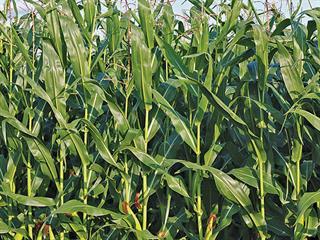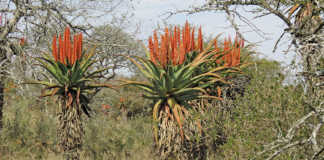
Maize is a warm-weather crop. It is not grown in areas where the mean daily temperature is less than 19°C, or where the mean of the summer months is below 23°C. The minimum soil temperature for germination is 10°C, but the process is faster and less variable at soil temperatures of between 16°C and 18°C. At 20°C, maize should emerge within five to six days. Yield is detrimentally affected at a soil temperature of about 32°C.
Frost can damage maize at all growth stages and a frost-free period of 120 to 140 days is needed to prevent damage.
Dryland maize requires between 350mm and 450mm of rain to produce a yield of around 3t/ ha.
Ideal soil properties
The most suitable soil for maize has adequate depth, good internal drainage, an optimal moisture regime, sufficient and balanced quantities of plant nutrients, and chemical properties that specifically favour maize production. Although large-scale maize production takes place on soils with a clay content of less than 10% (sandy soils) or in excess of 30% (clay and clay-loam soils), the soil texture classes between 10% and 30% have air and moisture regimes that are optimal for healthy maize production.
Establishing production potential
Several methods can be used to determine yield potential; each has its own limitations. One of the most reliable is long-term yield data collected by each producer; this reflects the inherent yield of that environment and the effect of fertilisation, soil cultivation, plant population, and management by the producer.
The maize seed: for food and many other uses
The maize kernel consists of an endosperm, embryo (germ), a pericarp (seed coat) and tip cap. The endosperm contains the main carbohydrates. The embryo contains the parts that give rise to the next generation, while the pericarp and tip cap enclose the entire kernel.
The endosperm contains about 80% of the carbohydrates, 20% of the fat and 25% of the minerals, while the embryo contains about 80% of the fat, 75% of the minerals and 20% of the protein found in the kernel.
The starch in the kernel is used in foods and in the manufacture of many products, including adhesives, clothing, pharmaceuticals and paper. The starch can be converted into sweeteners and used in soft drinks, sweets, bakery products and jams, to name but a few.
The oil from the embryo is used in cooking oils, maize margarine and salad dressings. The protein, hulls and soluble part of the maize kernel are used in animal feed.
Dented crown
As the name suggests, dent kernels have a dented crown, which is formed during drying when the softer starch in the middle of the kernel shrinks faster than the outer, more translucent sides.
The dented kernel has two flat sides opposite each other, with one side containing the embryo. Flint kernels can be round or flat in appearance and contain mainly translucent starch, with only a small part of soft starch in the middle, hence the name.
Maize with a high percentage of translucent hard endosperm is preferred by the dry milling industry as it produces more of the popular high-quality and high-value products than does soft maize.
Source: Du Plessis, Jéan: Maize Production (DAFF).













